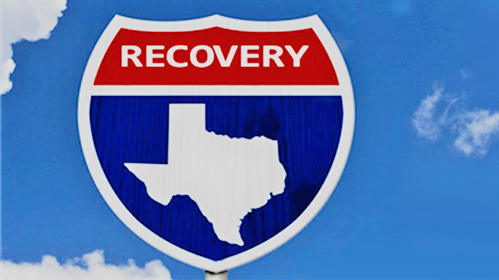May 28, 2021
This spring, we have been exploring community economic development priorities across rural and urban Texas, starting with COVID economic impacts, but also including perceptions of economic resilience, and in the previous installment, entrepreneurial intention. In this installment, we present survey findings from a set of questions about how residents value broad categories of community assets and what that might mean for prioritizing community investment. (For more detail about our Regional Economic Recovery Research survey methodology, click here). This is especially important now that the Biden Administration’s American Jobs Plan includes hundreds of billions of dollars in targeted investment in many of the community asset ideas we included in the survey, like broadband, infrastructure, and healthcare, to name just a few.
Economic development theories and practice commonly address sustainability across multiple objectives and decision-making criteria. Sustainable Local Economic Development (SLED) was developed to address sustainable development through a focus on quality of life, fairness, and equity in communities, participation and partnership, care for the natural environment, and concern for the future through a focus on long-term solutions (Newby, 1999). Asset-Based Community Development (ABCD) recognizes that communities are better thought of as a system of subsystems that needs to be developed to maintain a balance or equilibrium (Nel, 2018). ABCD addresses these subsystems broadly, including rights, capacities, and capabilities across human, physical, financial, natural, political, social, spiritual and cultural assets (or capitals). We have integrated these complementary perspectives by assessing unmet needs on a range of disparate assets to help local communities focus their development efforts sustainably. This is accomplished by targeting innovation efforts on projects that will close the gap between the level of satisfaction perceived about various assets that make up a community and the importance of those assets when making decisions about where to live or locate a business.
We asked urban and rural Texas residents about how important 18 different community assets were to them in the towns where they live. We also asked them how satisfied they were with what was available to them in their town for each asset over the past year, in hopes that the gap between satisfaction with existing assets and importance of those assets in a future decision might reveal an economic development need that might be prioritized ahead of others. For example, if survey participants indicated a particular community asset had high importance to them as they considered living in a new town, but they weren’t very satisfied with that asset in their current town, that might be evidence that residents would approve of additional investment in that asset.
In the charts below, we present one chart for each distinct geography. As we have in previous themes, we concentrate on West and Rural Texas and compare those to an urban sample. In general, we have grouped the assets into a handful of broad categories. From left to right on the charts the asset categories are Economic, Broad-based community assets, Family-oriented assets, and Communications.
Figures 1 and 2 present the findings for West Texas and for the rest of rural Texas, respectively, with the biggest gaps between high importance and low satisfaction circled. While the same assets in each group show similar gaps, West Texas survey respondents were slightly less satisfied with this set of assets, creating a larger gap, which might be related to the regional economic dependence on oil and gas that has increased the cost of living and exacerbated the region’s affordable housing deficit in recent years.
Figure 1. Asset Importance and Satisfaction – West Texas

Figure 2. Asset Importance and Satisfaction – Rest of Rural Texas

Figure 3, for Urban Texas, shows the same pattern of the largest gaps appearing in assets related to Economics, Infrastructure, and Communications. But the gaps between importance and satisfaction are smaller, perhaps indicating relatively fewer opportunities for clear-cut consensus around economic development investments in urban Texas communities.
Figure 3. Asset Importance and Satisfaction – Urban Texas

The gap between importance and satisfaction can potentially identify opportunities for targeted economic development around which community opinion can rally. Although respondents may not perceive business growth incentives as important as other economic assets in our survey, Bartik’s (2018) model simulation of economic incentives provided to businesses from state and local governments finds that carefully targeted incentives can have potentially large and widespread benefits for local residents.
Understandably, incentives cost money and there are caveats to the ways that incentives are provided to businesses to make them more beneficial, instead of more costly to local residents. Some of Bartik’s (2018) findings include that incentives should not be financed out of spending for K-12 education, incentives should be financed by increasing taxes on out-of-state business owners, tax incentives should be limited and up front, and incentives should be focused on job creation for the locally unemployed in firms with high job multipliers and high wage premiums. Moreover, instead of investing in tax incentives, incentives should provide customized services and skill development for local small and medium-sized businesses.
For future research, Bartik (2018) identifies a lack of research on how different levels of incentives may vary with local characteristics in comparison to a national context. With a baseline of survey data in non-urban corridors in Texas, research evaluating the impact of the American Jobs Plan could speak to the effectiveness of incentives in a range of economically depressed and economically growing areas in rural Texas.
Bartik, T. J. (2018). Who benefits from economic development incentives? How incentive effects on local incomes and the income distribution vary with different assumptions about incentive policy and the local economy. https://doi.org/10.17848/tr18-034
CNN, May 17, 2020. America’s surprising breeding ground for inequality: The internet. https://www.cnn.com/2020/05/17/economy/internet-access-universal-wifi/index.html. Accessed 5/11/2021.
Hanna, T. and Mitchell, C. May 2020. United States: Communities providing affordable, fast broadband Internet. Chapter 9 of The Future is Public: Towards Democratic Ownership of Public Services. https://www.tni.org/files/publication-downloads/futureispublic_online_def.pdf. Accessed 5/11/2021/
Nel, H. (2018). A comparison between the asset-oriented and needs-based community development approaches in terms of systems changes. Practice. 30(1), 33–52. https://doi.org/10.1080/09503153.2017.1360474
Newby, L. (1999). Sustainable local economic development: A new agenda for action? Local Environment, 4(1). https://doi.org/10.1080/13549839908725582
Pew Research Center, April 7, 2021. Internet/Broadband Fact Sheet. https://www.pewresearch.org/internet/fact-sheet/internet-broadband/. Accessed 5/11/2021.
The White House. March 31, 2021. Fact Sheet: The American Jobs Plan. https://www.whitehouse.gov/briefing-room/statements-releases/2021/03/31/fact-sheet-the-american-jobs-plan/. Accessed 5/11/2021.
 Return to Regional Economic Recovery Research- Main
Return to Regional Economic Recovery Research- Main
We encourage your feedback and would like to hear from you. Email BBR Director, Dr. Bruce Kellison, with questions about the survey, the findings, or the analysis presented here.


